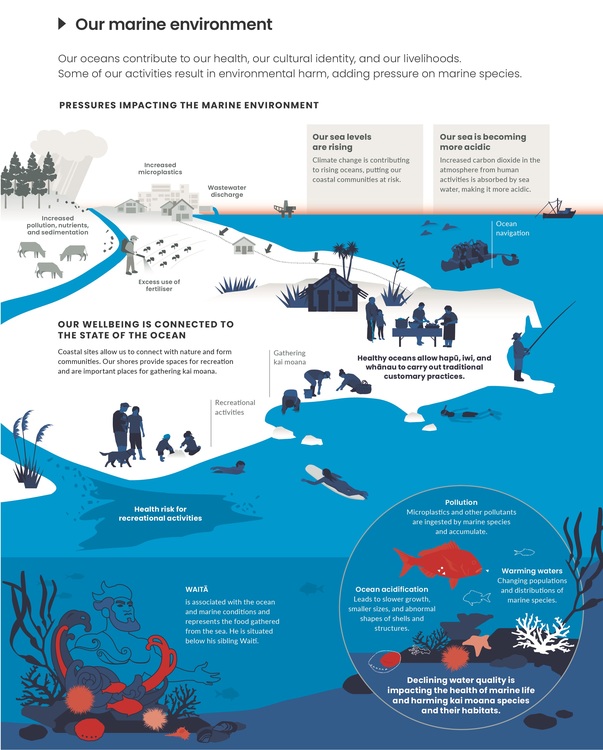Infographics provide an effective format to present a variety of things in a single figure. The science capability ‘Interpret representations’ encourages students to think about how data is presented, what the representation tells us and how it gets the message across.
Visual representations have literacy components that students may need support to understand. The article Understanding infographics provides background information on how they are constructed and why they are useful communication tools.
In this activity, students observe and interpret infographics from the Ministry for the Environment and Stats NZ’s Environment Aotearoa 2022 report. The activity includes probing questions to help students understand the ways in which infographics present information.
By the end of this activity, students should be able to:
- develop literacy skills for interpreting the information in an infographic
- discuss the purpose of an infographic
- discuss how an infographic gets the message across
- discuss information they have gathered from an infographic of interest to them.
Download the Word file (see link below).
The activity Using infographics includes a simple framework for creating an infographic. Students can use this framework to create an infographic about an environmental issue of interest to them.
Related content and activity ideas
Each infographic is supported by an article that explores the environmental domain that it represents, connections to our wellbeing, environmental indicators of its present state, and mātauranga and te ao Māori perspectives. Access the articles here.
The cross-curricular activity Exploring the images and whakataukī of Te Kāhui o Matariki explores written and visual components of the whetū representations.
The activity Using infographics has infographics from the Ministry for the Environment and Stats NZ’s Our atmosphere and climate 2020 report. Although the infographics use similar colours and images, they have quite different ways of presenting the data.
The Science Learning Hub team has curated a collection of resources to support Matariki and Environment Aotearoa 2022. This collection provides additional context and pedagogical insights.
We also curated a selection of bilingual and reo Māori infographics and diagrams in this handy collection. Visual representations provide excellent opportunities to develop literacy practices and learn new information.
Sign in to make these collections part of your own private collection, just click on the copy icon. You can then add additional content, notes, make other changes and also share and collaborate with others.
Useful link
Stats NZ and the Ministry for the Environment report on different aspects of Aotearoa New Zealand’s environment every 6 months. Access their reports here.
The Science Learning Hub has curated a number of infographics in our Science infographics Pinterest board.
Acknowledgement
This resource has been produced in collaboration with the Ministry for the Environment and Stats NZ.


